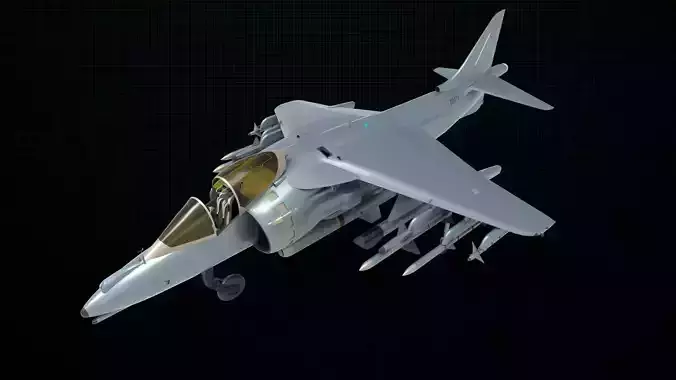1/7
The Harrier, informally referred to as the Harrier Jump Jet, is a family of jet-powered attack aircraft capable of vertical/short takeoff and landing operations (V/STOL). Named after a bird of prey,[1] it was originally developed by British manufacturer Hawker Siddeley in the 1960s. The Harrier emerged as the only truly successful V/STOL design of the many attempted during that era. It was conceived to operate from improvised bases, such as car parks or forest clearings, without requiring large and vulnerable air bases. Later, the design was adapted for use from aircraft carriers.
There are two generations and four main variants of the Harrier family, developed by both UK and US manufacturers:
Hawker Siddeley HarrierBritish Aerospace Sea HarrierMcDonnell Douglas AV-8B Harrier IIBritish Aerospace Harrier IIThe Hawker Siddeley Harrier is the first generation-version and is also known as the AV-8A Harrier; it was used by multiple air forces, including the Royal Air Force (RAF) and the United States Marine Corps (USMC). The Sea Harrier is a naval strike/air defence fighter derived from the Hawker Siddeley Harrier; it was operated by both the Royal Navy and the Indian Navy. During the 1980s, a second generation Harrier emerged; manufactured in the United States as the AV-8B and in Britain as the British Aerospace Harrier II respectively. By the start of the 21st century, the majority of the first generation Harriers had been withdrawn, many operators having chosen to procure the second generation as a replacement. In the long term, several operators have announced their intention to supplement or replace their Harrier fleets with the STOVL variant of the F-35 Lightning II, designated as the F-35B.
Throughout the 1950s, particularly in the years following the Korean War, a number of aircraft companies in both Europe and America separately decided to investigate the prospective capabilities and viability of vertical take-off and landing (VTOL) aircraft, which would eliminate the requirement for vulnerable runways by taking off and landing vertically as opposed to the conventional horizontal approach.[2] In addition to military applications, the prospect of applying such technology to commercial airliners was also viewed with considerable interest by the mid 1950s, thus the value of developing viable vertical take-off systems was judged to be substantial. However, during this era, few companies envisioned that a VTOL aircraft could also be compatible with the characteristics of high performance military aircraft.[2]
Underside view of the first prototype P.1127. The rotating jet nozzles were a key design element of its VTOL capabilityDuring 1957, following an approach by the British aero engine manufacturer Bristol Engine Company, who were designing an innovative vectored thrust engine, British aviation conglomerate Hawker Aircraft developed their design for an aeroplane that could meet an existing NATO specification calling for a Light Tactical Support Fighter.[2] Bristol's projected vectored thrust engine, which received the name Pegasus,[N 1] harnessed rotatable cold jets which were positioned on either side of the compressor along with a 'hot' jet which was directed via a conventional central tailpipe; this concept had originated from Michel Wibault, a French aviation consultant. Throughout much of the early development work, there was no financial support for the project from HM Treasury; however, support for the engine development portion of the effort was sourced via NATO's Mutual Weapon Development Program (MWDP).[3][2][4]
Senior project engineer Ralph Hooper at Hawker promptly set about establishing an initial layout for a theoretical aircraft to take advantage of the Pegasus engine, using data provided by Bristol.[2] During March 1959, the newly merged Hawker Siddeley decided to privately fund a pair of prototypes of the design, which had received the internal company designation of P.1127, to demonstrate the design's capabilities.[5] During the 1960s, the P.1127 attracted the attention of the RAF; this would eventually result in the development and issuing of Requirement ASR 384, which sought a V/STOL aircraft for ground attack operations.[6] During late 1965, the RAF placed an order for six pre-production P.1127 (RAF) aircraft
REVIEWS & COMMENTS
accuracy, and usability.







